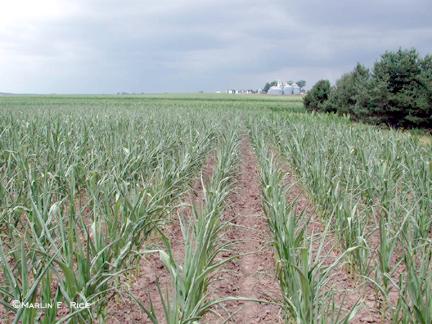Drought
What is it?
A drought occurs when there is insufficient water supply to meet demand in a region. Most regions experience drought conditions periodically, and some droughts can last for several years. Droughts typically take months to form and last for months to years, with geographic extents spanning from just a few to thousands of square miles. When an area experiences drought for an extended period of time, it has enormous impacts.
At their core, all droughts are caused when less precipitation falls than would be expected under normal circumstances. One cause for many summer-time droughts in North Carolina is a the development of a persistent high pressure area (or “ridge”) over the region. Sinking air flows within the area of high pressure and leads to clear skies, calm weather, and warmer temperatures. When a high pressure area stalls over a region for an extended period of time, we see increased amounts of evaporation from the ground and nearby lakes without replenishing rains. This evaporation can quickly dry out surface soils and reduce the levels of streams and reservoirs.
There are several commonly used drought classifications:
- Meteorological drought is defined as a long-term measurement of lower than normal precipitation. Because “normal” is specific to the region, time of year, and length of time in question, there is no single numerical threshold that would define a drought.
- Agricultural drought is when there is insufficient moisture in the soil to support plant growth. Rainfall deficits during the critical growth periods of a crop (differs from plant species to species) can result in large yield losses, or even complete crop loss. Agricultural droughts can develop quickly during a dry spell, particularly when combined with a heat wave that puts unusual stress on plants at critical growing stages.
- Hydrological drought is a lack of water in subsurface and surface terms. This includes the water supply that is held in streams, lakes, groundwater and other types of reservoirs. Hydrologic droughts tend to develop over an extended time period.

Examples from the Field: Drought and Agriculture
Droughts impact individual plants as well as the whole crop canopy. Drought stress on a plant can have irreversible damage upon that plant, even before symptoms can be seen (i.e. wilt). Although drought tolerance varies among different plant species, most need adequate water throughout their lifecycle (from germination to harvest) in order to be produce a high yield. Drought signs in a plant include decreased leaf area, leaf drop, root growth, stomatal close, yellowing leaves, wilt, and finally complete death.
When a water deficit occurs, the plant’s first response is to limit leaf expansion (less water is lost through transpiration). The size of each leaf might decrease, but also the number of leaves on each plant is decreased. As the stress continues, the plant will respond by dropping its leaves. Below the soil, the plant is also growing longer and more dissected roots in order to seek out pockets of water, or deeper sources of water. Continued water stress also forces the plant to close stomata on the leaves to decrease respiration, which in turn decreases the amount of photosynthesis that occurs in the plant (yellow leaves will appear). As the plant continues to be stressed, leaves may wilt and droop (in broadleaves) or curl inward (in grasses such as corn). This action minimizes the amount of leaf surfaces in contact with air and the sun. If the plant continues to be water-stressed, it will finally turn brown and simply die.
There are many plant breeding programs now that are looking to develop crop plants that do not require as much water. Other breeding programs are looking at developing plants that are salt tolerant in order to use reclaimed water (such as on golf courses).